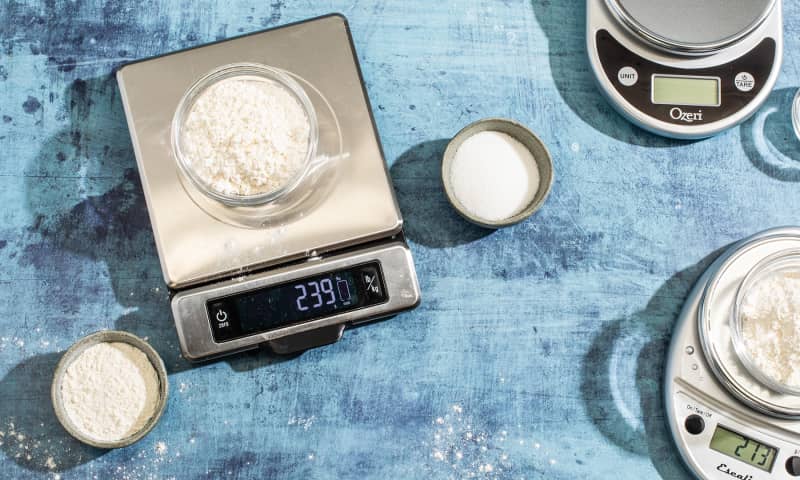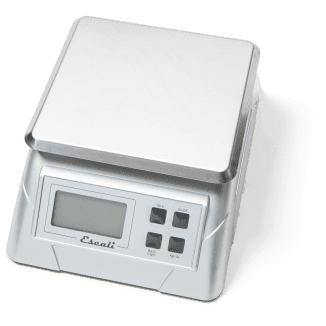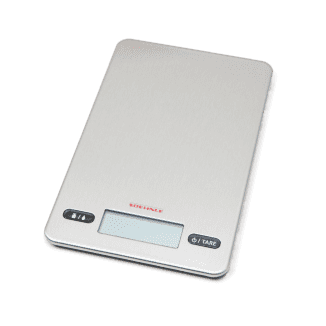Digital scales measure ingredients by weight to guarantee accuracy. Our winner is the OXO Good Grips 11 lb Food Scale with Pull Out Display and has been for years. It’s reliably accurate, has a large display with a backlight for clear legibility, and has a removable platform for easy cleanup. We also chose a Best Buy, the Ozeri Pronto Digital Multifunction Kitchen and Food Scale. While it doesn’t have a detachable platform, it is an accurate, less expensive option.
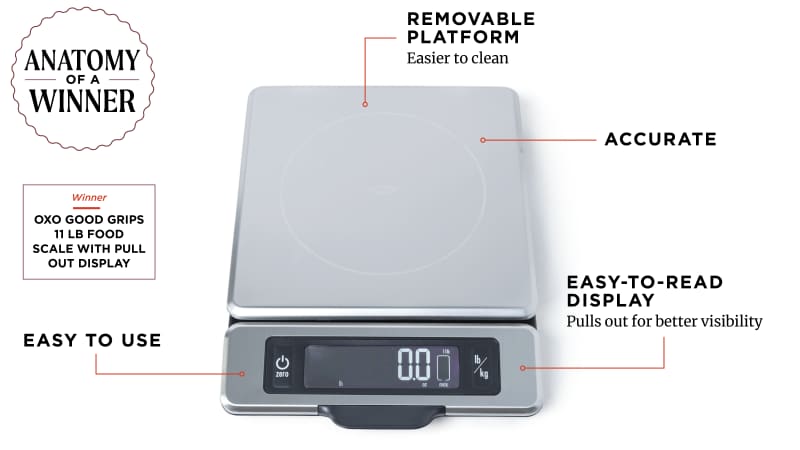
A digital scale is a game changer in the kitchen. A scale is critical for baking recipes, where measuring dry ingredients by weight is the only way to guarantee accuracy. We’ve proven this in tests where we’ve repeatedly measured a cup of flour by volume, using a “dip and sweep” method, and found that there can be up to a 20 percent difference in the weight—a variance that can mean the difference between a cake that’s squat and dense and one that’s fluffy and tender.

Scales have many applications in cooking too. Using one to portion burgers, for example, means no more guessing if the patties are the same size and will thus cook at the same rate. They can even make cooking and cleaning more efficient, thanks to the help of the "tare" function. Instead of dirtying different measuring cups or spoons to get the right amount of each ingredient, you can measure ingredients directly into your mixing bowl, pushing the tare button between each ingredient to reset the displayed weight on the scale to zero.
We tested a variety of consumer-grade scales with maximum capacities between 9 and 15 pounds, as we find this to be the most useful size for most cooks. (Commercial-grade scales are often certified for accuracy by the National Conference on Weights and Measures but are too pricey for the home cook.) The scales we tested have a resolution of 1 gram, meaning that they can display weights in 1-gram increments. This does not mean, however, that they reliably detect weight differences of a single gram, though. For scales with this resolution, we find accuracy within a range of ±3 grams to be acceptable for most cooking. If you're measuring particularly small amounts, such as a few grams of coffee or salt or baking soda for a recipe, we recommend using a coffee precision scale or precision scale to ensure correct results.
What to Look For
- Accuracy: All of the scales were acceptably accurate, measuring within a gram or two of the correct mass when we tested them with calibrated lab weights. And when we used the weights with multiple copies of each model, most gave the exact same reading every time. A couple of them consistently displayed fluctuating readings, but even those were just a few grams off the mark.
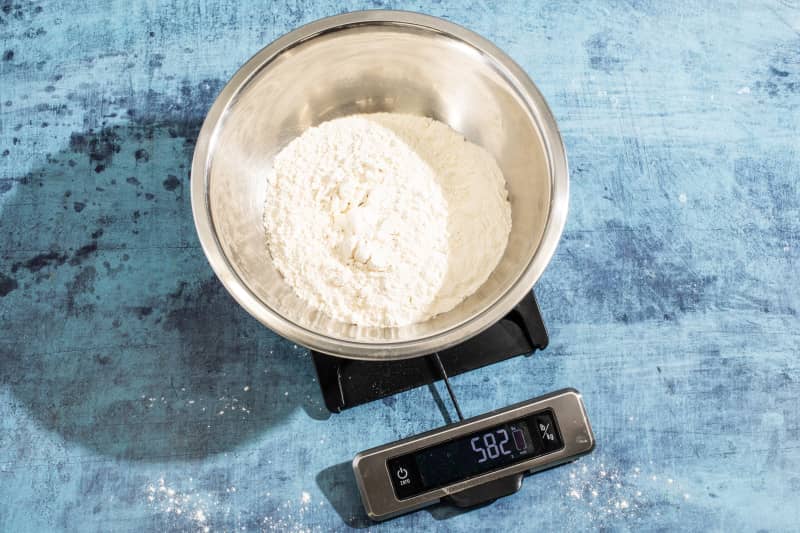
- Easy-to-Read Display: The best digital scales had displays that showed their measurements in large, bold numbers. They also had displays that we could see even when we'd put a large bowl on the measuring platform. Our winner has a display bar that can be pulled out 4 inches from the platform, ensuring that the screen is visible under even the biggest, bulkiest items.
- Easy and Intuitive Use: We liked scales with simple, intuitive interfaces that made it easy to power on, switch between grams and ounces, and tare.
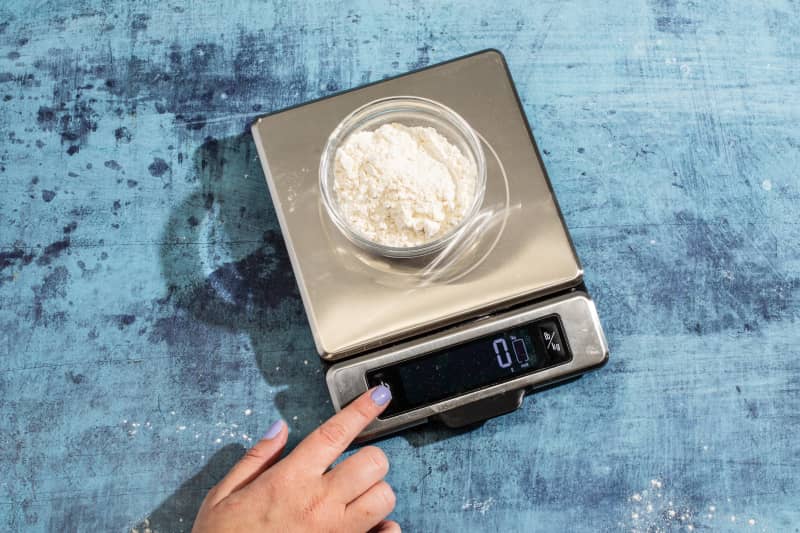
- Moderately Heavy, Flat Design: When it came to countertop stability, scales weighing more than 1 pound stayed put more reliably. Flat, slim models were also more stable and were easier to store.
- A Removable Platform: We preferred models that allowed us to take off their platforms for easy cleanup. Models with fixed platforms and hard-to-reach crevices trapped flour and made us worry that cleaning spray or soapy water might get into the machine and risk damage.
This Kitchen Scale Will Improve Your Cooking
There’s a reason we stock dozens of these ATK recommended scales in the test kitchen.What to Avoid
- Inaccuracy: We expect consumer-grade scales to be accurate within 3 grams of the correct weight. While all the models we tested were accurate within this range, we preferred models that hewed closer to the correct value.
- Hard-to-Read Displays: Legibility was problematic on models with tiny, hard-to-read, or obscurely labeled buttons but was even more of an issue on scales where the control panel was flush with the platform rather than set into a separate part of the scale body. No matter how big and crisp the display was on these scales, larger bowls cast a shadow over, or completely blocked, the screen, forcing us to bend down to peer underneath or nudge the bowl backward until it threatened to fall off the back end of the platform.
- Difficult Operation: Some scales were so unintuitive to operate that we can’t recommend them. Users fumbled around for a switch or button to change the unit of measurement from grams to ounces. On one of the losing models, this was a tiny toggle on the underside of the scale underneath the battery cover, which we only found once we referred to the owner’s manual. On another, you must gently press the “on/off” button as the scale powers up—and if you miss that brief window, you have to turn it off and start all over.
- Light Weight or Feet: Models weighing less than a pound or that had feet frequently teetered back and forth or slid around on the counter.
